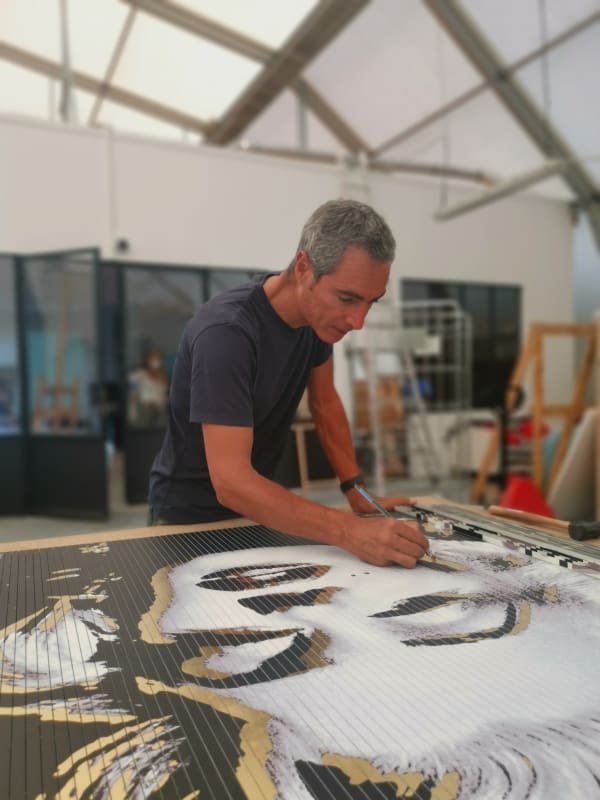How did your artistic journey begin?
I'm originally from Paris and have always lived in Saint-Germain-des-Prés. As a child, on my way to school, I would often stop in front of art gallery windows displaying the work of truly remarkable artists. My father introduced me to the concept of kineticism, explaining that by folding paper accordion-style, you could create kineticism.
The idea was to create two paintings in one. I went to a friend's house and took photos of their children, then cut the images into strips and attached them to the pyramid-shaped corners. The effect was stunning, and I was able to sell enough portraits to buy a second-hand car.
All this was possible thanks to my father's ingenuity. He was a very creative man, often painting beautiful works of art in his spare time.
What artists influence you?
At first, I was inspired by both by Op art Kinetism as well as Pop art. Op art and kinetic art have always fascinated me because instead of depicting recognizable objects or scenes, it focuses on the pure visual experience, engaging the viewer in an interactive experience. I especially value the work of Vasarely, Yaacov Agam, Carlos Cruz Diez and Soto. As far as pop art is concerned, we're talking about Andy Warhol, Roy Lichtenstein, Jasper Johns, James Rosenquist and even Jean-Michel Basquiat.
What inspires you?
Op art and kinetic art have always been my main sources of inspiration. But my work draws its inspiration from a variety of sources, which is why I take great liberty in the subjects I work on.
At the same time, the great masters of the Italian and Flemish Renaissance taught me the fundamentals of composition, light and colour, guiding my own creative process. By exploring twentieth-century artistic movements such as Expressionism, Cubism, Surrealism and Pop art.
I have discovered a wealth of inspiration that manifests itself in my creations. Every encounter, every work of art and every daily experience enriches my language, driving me to seek innovation. In other words, it's this diversity of inspiration that fuels my desire to create and drives me to constantly challenge established conventions. My work is about giving emotion to the viewer and surprising. I want my painting to relate to our universal human desire to feel alive. For me, a work of art is a success if it elicits emotion, if it resonates with us, if it stirs something within us.
An artist whose work I would collect if I could?
There are so many, but if I had to choose one, it would be Pierre Soulage. For the light he was able to bring out of his deep black.
What is your favourite artwork and why?
Those in which I focus on the word "Love". Because this word is powerful and universal.
Describe your creative process?
My best ideas come when I'm relaxed. I get inspired by things I see in my daily life, by my travel, by visiting exhibitions and museums. I brainstorm and jot down notes. And finally, I stay open-minded and flexible, because who knows where my next big idea will come from?
The best piece of advice I ever received?
Always follow through on your ideas.
Where did the title for your current show come from?
My main aim was to pay tribute to these great masters, who have been and still are my guides and inspirations, including Vermeer, Matisse, Le Douanier Rousseau and Frida Kahlo, among many others.
A place that means a lot to you other than your studio?
My home surrounded by my family.
In another life I would have been?
A world-class sportsman.



